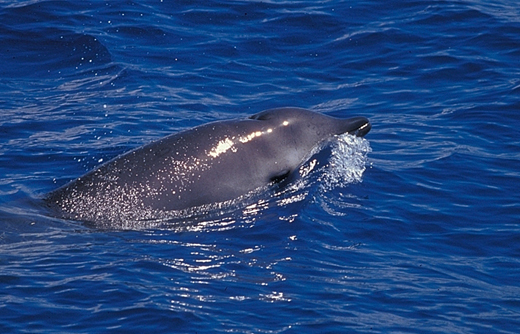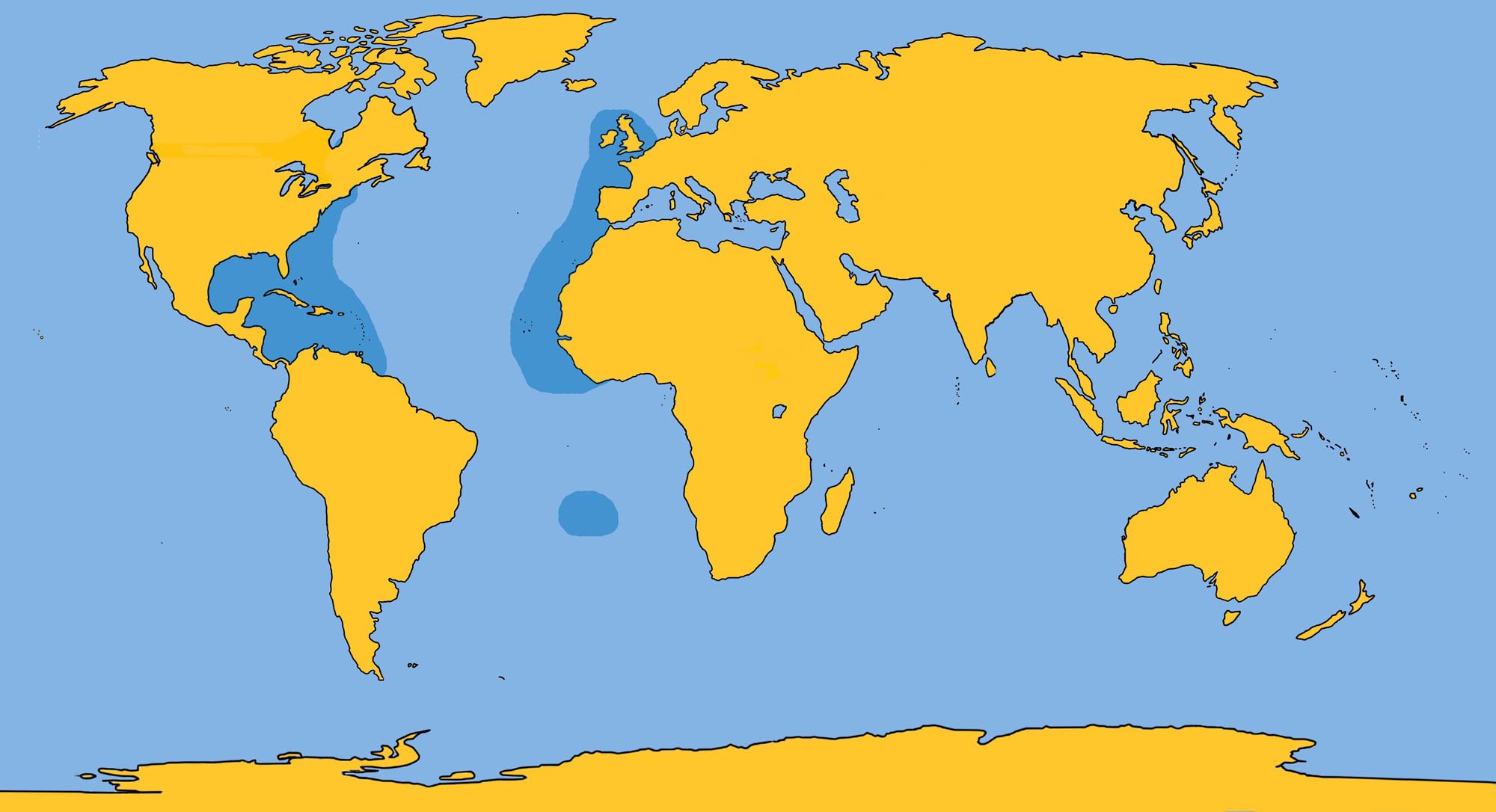Famiy: Ziphiidae
Genus: Mesoplodon
Species: M. europaeus Gervais, 1855
Except as distinguished below, Gervais’ beaked whale is practically identical to Sowerby’s beaked whale. Unlike Sowerby’s however, Gervais’ beaked whale is an extremely rare animal, known from about a dozen strandings. The first specimen was found in the English Channel, hence, the name europaeus. All subsequent strandings were found in the western North Atlantic — New Jersey, Long Island, New York, and Florida, for example.
Physical Description: The body is long, uniformly stocky, and smooth with less scarring than is found on Sowerby’s beaked whales. A small head tapers to a very narrow beak. The melon rises to form a bump, with an indentation at the blowhole. Typical wishbone indentations are found at the throat.
Color: Dark gray-black on the dorsal and flank regions, slightly lighter ventrally.
Fins and Flukes: A small, well-developed falcate dorsal fin is pointed backward at its tip and located to the rear of the mid-back region. Small flippers are located almost under the body. Well-developed narrow flukes, nearly pointed, sweep slightly backward at the tips.
Length and Weight: This whale reaches at least 16.5 ft (5 m).
Teeth: A pair of teeth in the lower jaw is located one-third of the way back from the tip of the snout. No teeth are found in the upper jaw. The female’s teeth so not erupt through the gums.
Feeding: They are known to feed on squid.
Breathing and Diving: The beak thrusts prominently from the water when the whale breathes. Their dives last from 12 to 15 minutes.
Mating and Breeding: A 14 ft (4.3 m) female was found with a 7 ft (2.2 m) calf in Jamaican waters in February 1953.
Herding: These whales have been observed at sea individually or in groups of 3 to 10 or more.
Distribution: Western North Atlantic from Trinidad, Jamaica, and the Gulf of Mexico to Long Island, New York. One record exists from the English Channel. They can be seen in deep waters around the Bahamas in the spring.
Migration: No information available.
Natural History Notes: The estimated longevity is at least 17 years.
GERVAIS’ BEAKED WHALE DISTRIBUTION








